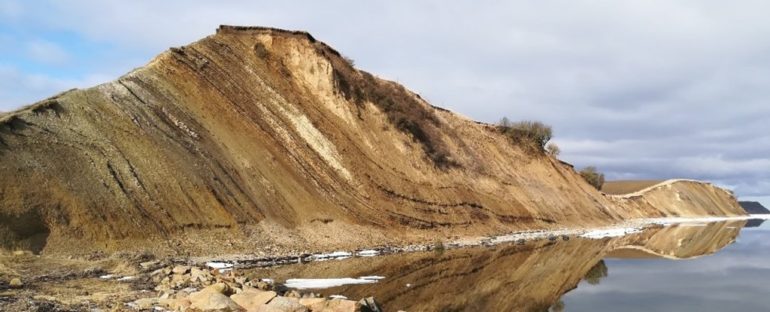As geological puzzles go, it’s a pretty good one. In the global greenhouse conditions of the early Eocene (56-48 million years ago), how did huge numbers of giant glendonite crystals manage to form?
These rare calcium carbonate crystals – that need temperatures lower than 4 degrees Celsius to form – are composed from the mineral ikaite and found in their tens of millions on the Danish islands of Fur and Mors. They have been dated to 56-54 million years ago.
“Why we find glendonites from a hot period, when temperatures averaged above 35 degrees, has long been a mystery,” says geologist Nicolas Thibault, from the University of Copenhagen in Denmark. “It shouldn’t be possible.”
After a detailed chemical analysis of glendonite samples by Thibault and an international team of researchers, using a technique called clumped isotope thermometry to trace temperatures back millions of years, we may have an answer: the Eocene was perhaps not as uniformly warm as previously thought.
The idea of colder Eocene spells has been put forward previously, but the evidence has been inconclusive so far. The new chemical breakdown helps researchers argue the case for cooler conditions, with models suggesting the glendonites formed in waters below 5 degrees Celsius (41 degrees Fahrenheit) at a depth of around 300 metres (984 feet).
Sedimentary layers of ash on the island of Fur point to the possibility that volcanic eruptions may well have been responsible for these chillier episodes in the Eocene, localised around specific regions, which would help to explain the cooler waters and the rock record.
“There were probably a large number of volcanic eruptions in Greenland, Iceland and Ireland during this period,” says Thibault.
“These released sulphuric acid droplets into the stratosphere, which could have remained there for years, shading the planet from the sun and reflecting sunlight away.”
“This helps to explain how regionally cold areas were possible, which is what affected the climate in early Eocene Denmark.”
The new study backs the hypothesis that colder Eocene periods are more likely than the alternative – which is that the science is wrong about the sort of temperatures that ikaite-based rock is able to form at.
Next, the team wants to see similar investigations carried out to see how widespread the cooling discovered in the Danish Basin actually was. Other geological records – including those from the Arctic – suggest this dip in temperature wasn’t happening all over the globe through the Eocene.
As with any discovery about our climate past, the study is going to help scientists map out our climate future.
We may not have the sky blotted out by volcanic ash anytime soon, but a quickly changing climate is something we are going through – just like parts of the world were more than 50 million years ago, long before humans arrived on the scene.
“Our study helps solve a mystery about glendonites, as well as demonstrating that cooler episodes are possible during otherwise warmer climates,” says Thibault.
“The same can be said for today, as we wise up to the possibility of abrupt climate change.”
The research has been published in Nature Communications.



